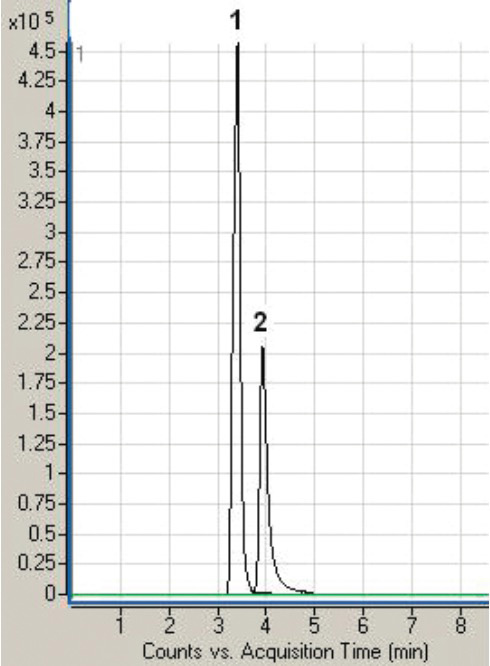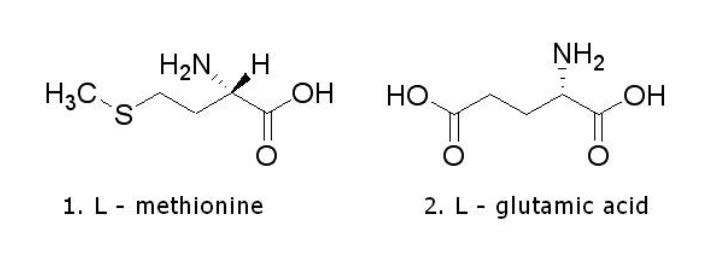Non Derivatized Amino Acids From Synthetic Urine Analyzed
Amino Acid analysis is generally performed with HPLC along with a time consuming Pre-Column Derivatization process that is very tedious and adds cost. Using this Method, the Derivatization step is not necessary and the compounds are easily quantified.
L- Glutamic Acid can be an extremely difficult Amino Acid to analyze due to the strong adsorption by the smallest amount of Residual Silanols present on the surface of ordinary HPLC Columns, producing very broad Peak shapes.
Although this Method primarily focuses on the Analysis of Amino Acids in Urine (synthetic or human), the Method could also be applied to the determination of these Compounds in other Physiological Fluids.
Peaks:
1. L – Methionine 150 m/z (M+H)+
2. L – Glutamic Acid 148 m/z (M+H)+
Method Conditions
Column: Cogent Diamond Hydride™, 4μm, 100Å
Catalog No.: 70000-15P-2
Dimensions: 2.1 x 150mm
Mobile Phase:
—A: DI Water / 0.1% Formic Acid / 0.005% Trifluoroacetic Acid (TFA)
—B: Acetonitrile / 0.1% Formic Acid / 0.005% Trifluoroacetic Acid (TFA)
Gradient:
| Time (minutes) | %B |
| 0 | 95 |
| 5 | 95 |
| 6 | 90 |
| 9 | 90 |
| 10 | 80 |
Flow rate: 0.4mL / minute
Detection: ESI – pos – Agilent 6210 MSD TOF Mass Spectrometer
Sample Preparation : Synthetic Urine
t0: 1.44 minutes
Notes: The determination of Amino Acids in biological fluids is important in clinical biochemistry and analytical chemistry. For example measuring Methionine concentrations in retinal Venous Occlusive Disease (RVO) is essential. In addition, increased Methionine concentrations have been implicated in a variety of other clinical conditions, including neural tube defects, spontaneous abortion, placental abruption, osteoporosis, diabetic angiopathy, and neurological disorders.
Methionine is an important Amino Acid involved in Protein synthesis and transmethylation reactions. It is also the precursor of Homocysteine and Cysteine, two important risk factors for Cardiovascular Diseases. As Homocysteine research has gained interest, the evaluation of Methionine concentrations in physiological fluids has acquired importance.
Glutamic Acid is a major excitatory neurotransmitter in the mammalian central nervous system. Studies have shown that the changes in the amount of Glutamic Acid in special brain regions are an indication of Parkinson’s Disease.
Attachment
No 58 Methionine and Glutamic Acid Analyzed with LCMS pdf 0.2 Mb Download File




